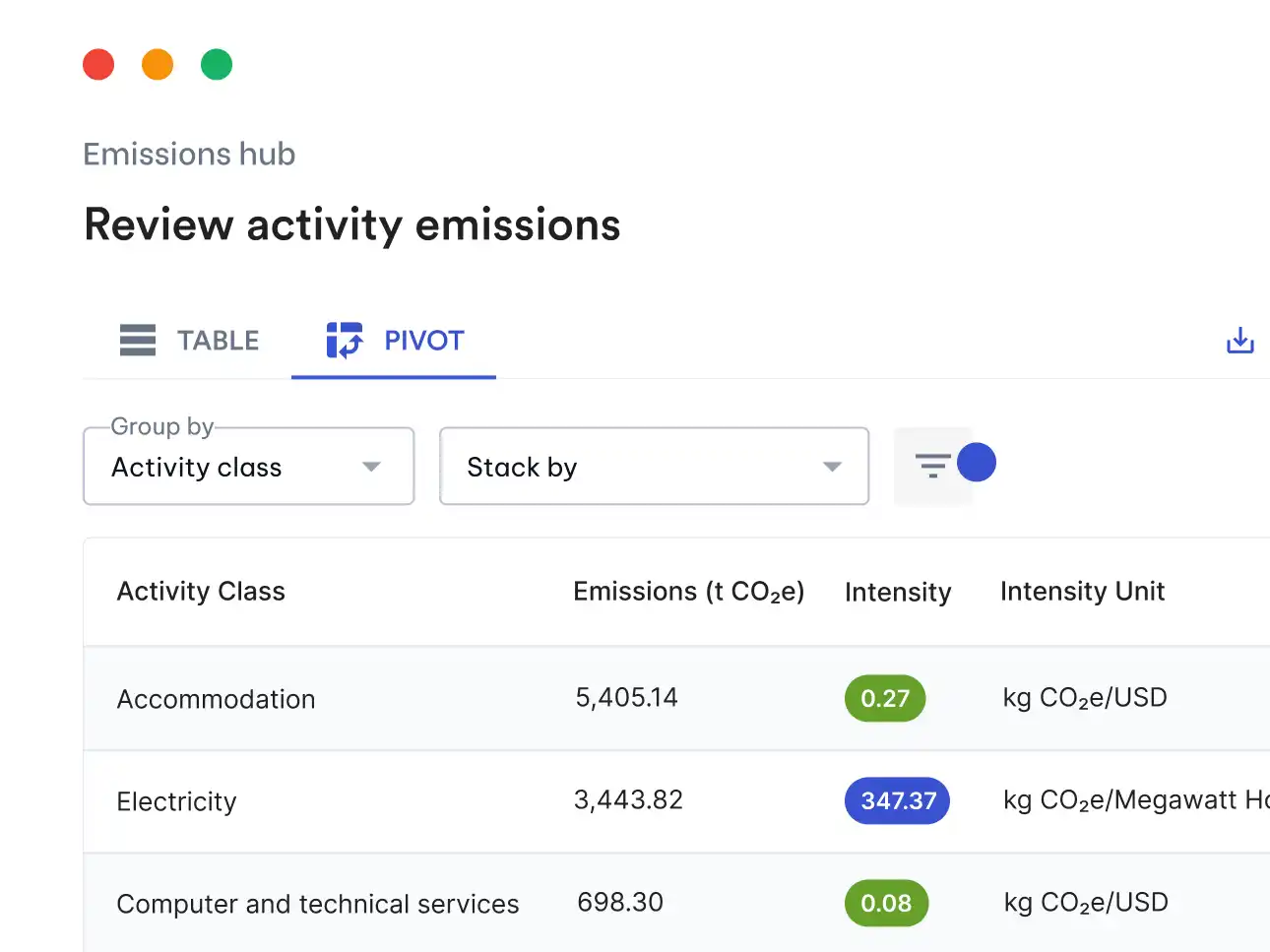Climate change is one of the most pressing global issues of our time, with greenhouse gases (GHG or GhG) being one of the key drivers of this crisis. Greenhouse gases trap heat in the Earth’s atmosphere, leading to an increase in global temperatures. Understanding greenhouse gases and how they contribute to climate change is vital to reducing the impact of these emissions and protecting our planet.
In this article, we will explore the history of greenhouse gases, different types of greenhouse gases, the breakdown of GHG emissions by economic sector, global trends in GHG emissions, the impact of greenhouse gases on the environment, and how organizations can reduce their GHG emissions.
History of greenhouse gases
The history of greenhouse gases dates back to the industrial revolution, when an increase in the burning of fossil fuels led to an increase in carbon dioxide (CO2) emissions. This rise in CO2 concentrations caused global temperatures to rise, leading to the phenomenon of global warming.
In the late 19th century, Swedish scientist Svante Arrhenius was the first to suggest that increasing CO2 concentrations could cause global warming. In the 1950s, British scientist Guy Stewart Callendar suggested that human activities were the cause of increasing GHG concentrations, leading to the first discussions of climate change.
In 1988, the Intergovernmental Panel on Climate Change (IPCC) was established to assess the scientific evidence for climate change, and as more research was conducted, it became increasingly clear that human activities were leading to an increase in GHG emissions, with potentially catastrophic consequences for the planet.
Different types of greenhouse gases
There are several different types of greenhouse gases, the most common being:
- Carbon dioxide (CO2), the most abundant GHG, accounting for about two-thirds of all GHG emissions. It is mostly emitted through fossil fuel and industrial processes, as well as forestry and other land use.
- Methane (CH4), the second most abundant GHG. It is mostly emitted through agriculture and the burning of fossil fuels.
- Nitrous oxide (N2O), the third most abundant GHG. It is primarily emitted from agriculture and the burning of biomass.
- Fluorinated gases (F-gases), including hydrofluorocarbons (HFCs), perfluorocarbons (PFCs), sulfur hexafluoride (SF6), and nitrogen trifluoride (NF3). They are emitted from industrial processes, refrigeration, and the use of a variety of consumer products.

Breakdown of global greenhouse gases by economic sector
According to the International Energy Agency (IEA), the breakdown of global greenhouse gases by economic sector is as follows:
- 28% — transportation, including emissions from fuel used for cars, trucks, airplanes, ships, and other vehicles.
- 25% — electricity and heat production, including emissions from fossil fuels used for electricity and heat generation, as well as emissions from the burning of biomass for electricity and heat generation
- 21% — industry, including emissions from the production of iron and steel, cement, chemicals, and other industrial processes
- 12% — commercial and residential buildings
- 10% — agriculture
- 4% — land use and forestry
Global trends in greenhouse gas emissions
According to the IEA, global greenhouse gas emissions have been increasing since the early 2000s, reaching a record high of 54.3 gigatons (GT) of CO2 equivalent in 2018. This increase has been driven largely by energy use and industry, with transportation, electricity and heat production, and industry accounting for the majority of global GHG emissions. In addition, global emissions are projected to continue to increase in the coming years, with the IEA predicting that global GHG emissions could reach 56.3 GT of CO2 equivalent by 2030.
Impact of greenhouse gases on the environment
The effects of greenhouse gases on the environment are far-reaching. For example, rising global temperatures can lead to longer and more intense heat waves, droughts, floods, and other extreme weather events. Warmer temperatures can also cause sea levels to rise, leading to the displacement of coastal communities. In addition, increased GHG concentrations can reduce air quality, creating health risks for people, particularly those with existing respiratory conditions.
Greenhouse gases can also alter the composition of the atmosphere. Higher concentrations of GHG can cause the pH of oceans to become more acidic, leading to a decrease in the populations of marine species. Warmer temperatures can also cause ecosystems to shift as certain species migrate to new areas and other species become less abundant. These changes can have a ripple effect on the food web.
Tracking greenhouse gases
The GHG Protocol is an international accounting tool for quantifying, managing and reporting GHG emissions. The Protocol is designed to be used by companies and organizations to measure and report their GHG emissions accurately and consistently. It is based on the principle that organizations should measure and report their emissions in a way that is transparent, consistent, and comparable. The Protocol provides guidance on how to quantify and report GHG emissions in a standardized way, using the latest scientific and technological methods. This allows organizations to benchmark their performance and make informed decisions about reducing their GHG emissions.
Future of greenhouse gases and climate change
Greenhouse gases are a major cause of climate change, and reducing GHG emissions is essential for protecting our planet from the worst impacts of global warming. By reducing GHG emissions from transportation, electricity and heat production, industry, commercial and residential buildings, agriculture, and land use and forestry, we can limit the rise in global temperatures and protect the environment from the damaging effects of climate change.
Governments, businesses, and individuals all have a role to play in reducing greenhouse gases. Governments around the world have begun to introduce policies to reduce their GHG emissions, including the Paris Agreement, which aims to keep global temperature increases to below 2°C. Companies and organizations can also take steps to reduce their GHG emissions and become more sustainable, such as tracking their carbon emissions, investing in renewable energy sources, increasing energy efficiency, and reducing their reliance on fossil fuels. And individuals can take steps to reduce their GHG emissions through simple lifestyle changes, such as reducing their energy consumption and using public transport. By taking collective action, we can all help to reduce greenhouse gases and create a more sustainable future.





